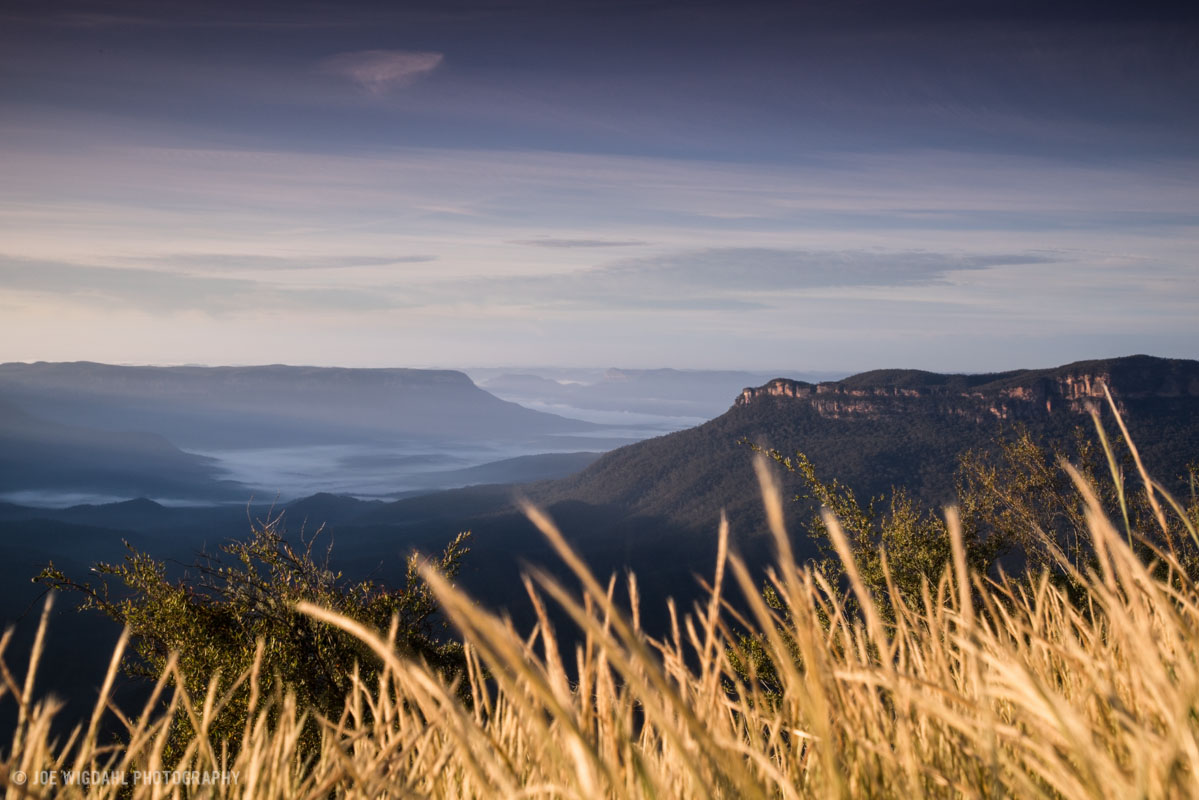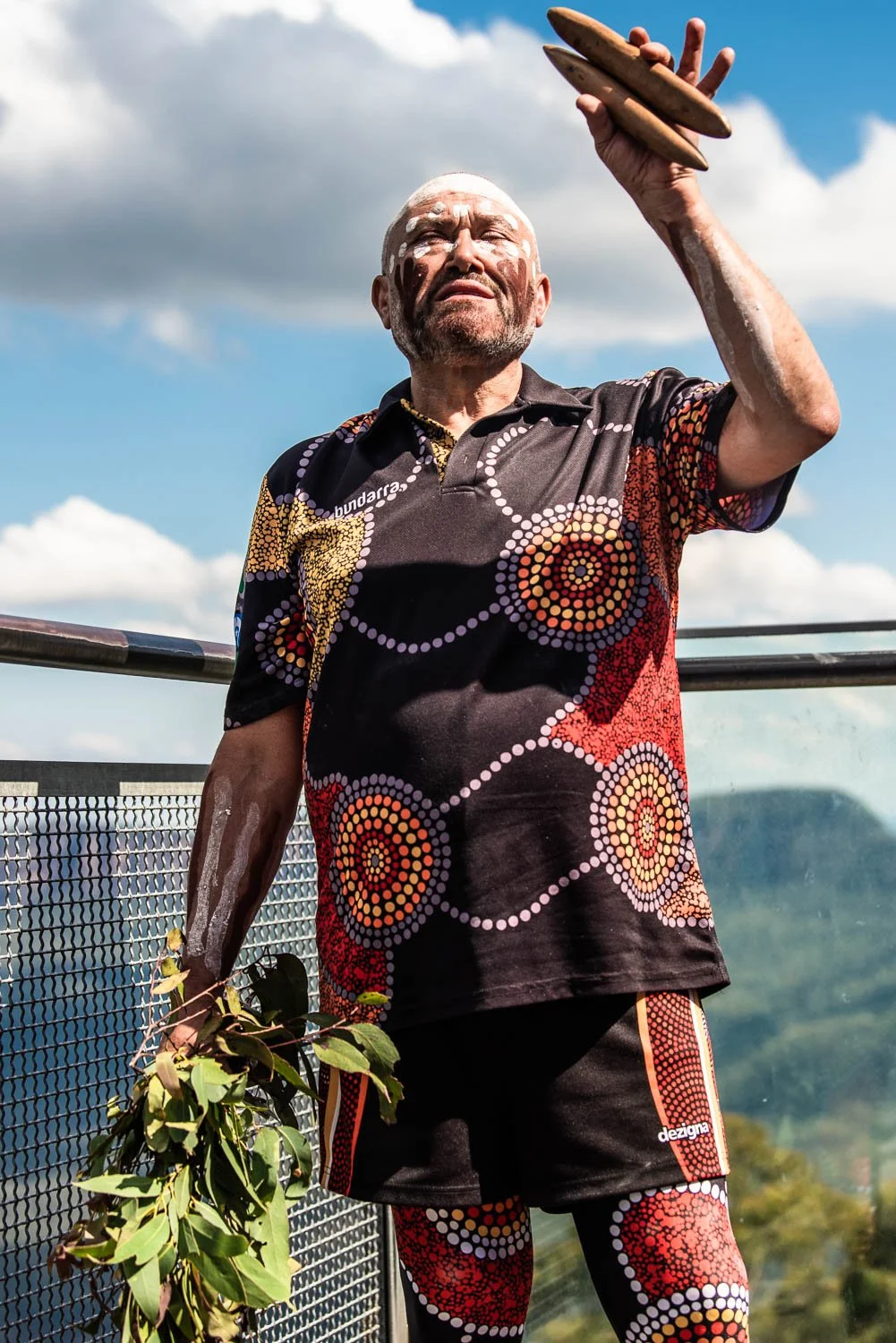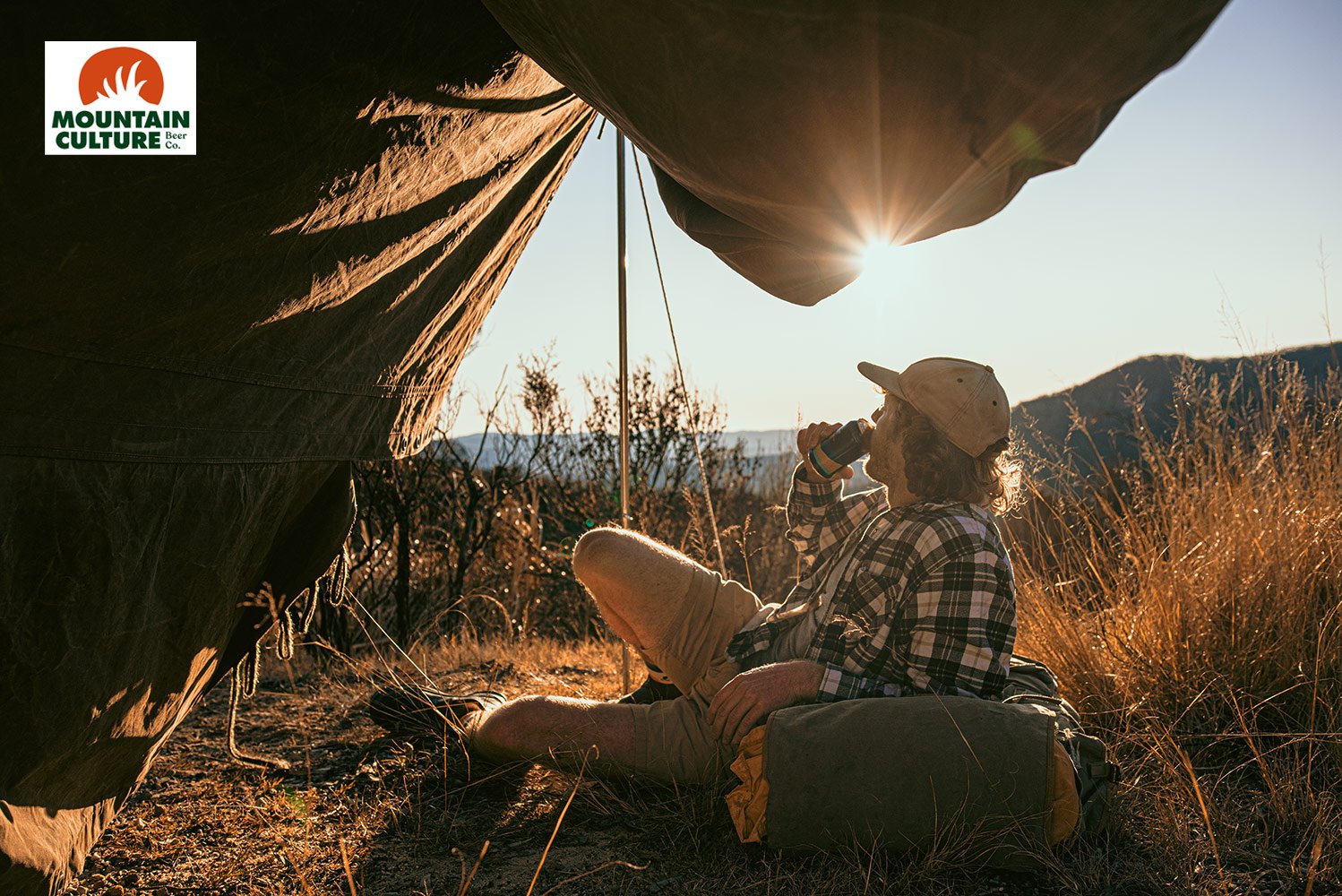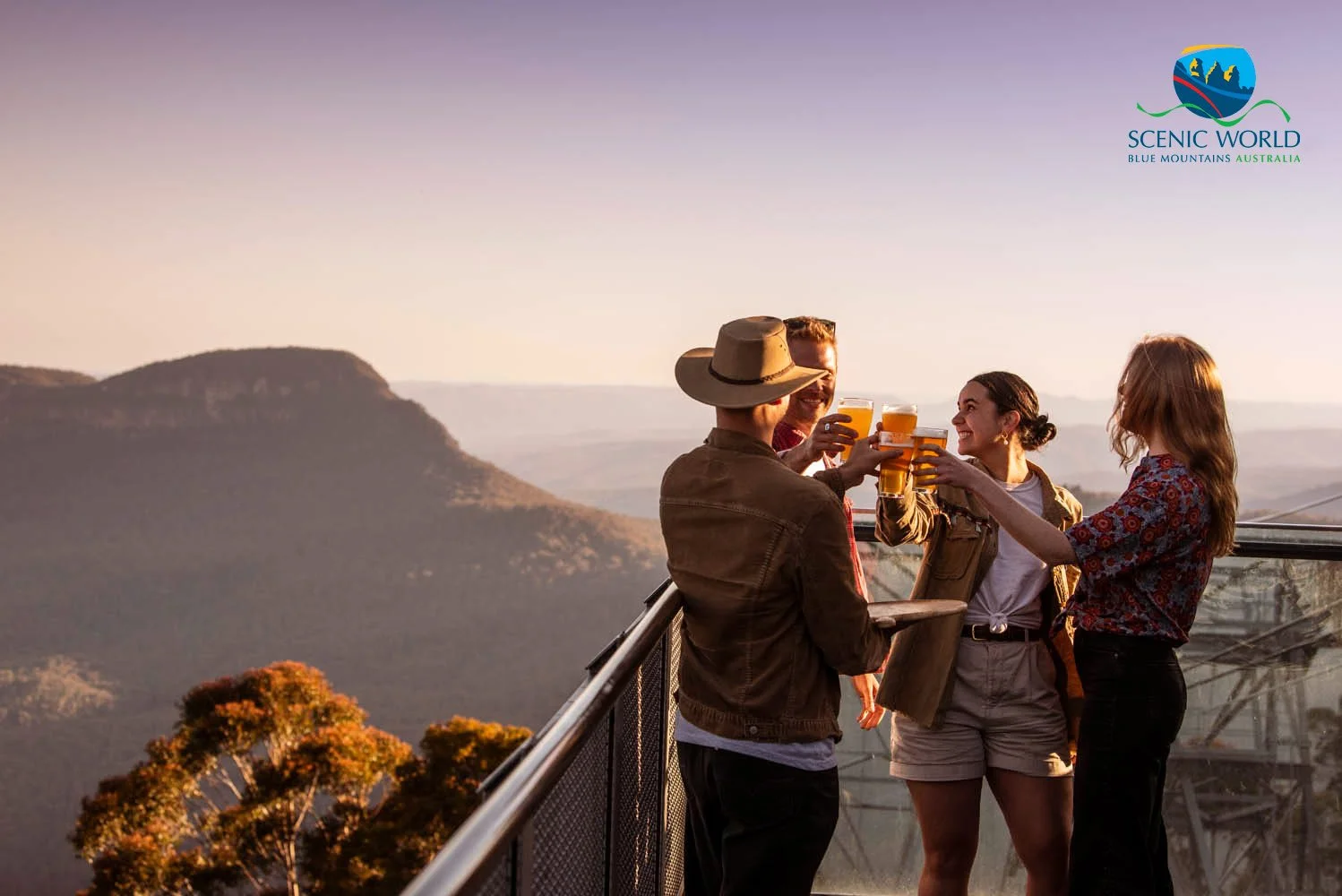Smithsonian Magazine: The Blue Mountains
A few months ago I was contacted by the U.S. natural history publication the Smithsonian Magazine to shoot a story on Charles Darwin’s exploration of the Blue Mountains- it’s one of my favourite places in Australia.
It was a shoot that I became more passionate about as I worked my way through the assignment; it was an odd coincidence that I was hired for this shoot- a few weeks before the magazine asked me about doing the assignment my wife and I had decided to move our family to the Blue Mountains. It was a pretty exciting opportunity to explore a whole region that would be our new home. It was early spring when I started the job and the Blue Mountains is much colder and rainier than Sydney, so instead of doing the whole shoot in one trip, I actually had to drive out to the mountains every weekend for a month to get a break from the rain and fog and get all the shots I needed.
In Glenbrook and also in the Wolgan Valley I saw hand paintings in caves which are said to range from hundreds to thousands of years old and it struck me how much more of an impact seeing hand prints made on me than carvings or drawings I’ve seen at other sites. To see a hand print of someone from thousands of years before is to see their size, their age and their physical humanity and connect with them in a way I hadn’t really sensed before. I noticed one set of hand prints where the person must have broken their hand at some point and it healed badly because one of the fingers bent away from the hand in an unnaturally awkward angle. I felt like I was reading some form of ancient text about who lived on this land.
Often when I'm shooting a morning landscape I'll get to the location well before dawn and shoot through the sunrise for an hour or two. Even in a not-so-mindblowing landscape there is usually a moment where the light and the morning atmosphere does something that makes everything light up in the right way. For these shots of what is known as the Jamison Valley in the Blue Mountains off of Sublime Point in Leura, I felt like I was watching a light show- the sun, the mist and the eucalyptus vapor in the air kept changing colors and lighting up the landscape in surprisingly different ways. Every 10 minutes was something different. Finally when I was done I set the camera down in the grass while I was packing up my gear and tripod and grabbed a quick shot- I realised that that was probably my favorite shot of the morning.
I spent a day doing a massive hike in the bushwalk around the Three Sisters. I started off at Scenic World taking the world's steepest train down the escarpment and walked for hours around the bush track. I wasn't keeping track of time and missed their last elevator back up, so I ended up having to climb the near-vertical staircase up the Three Sisters with a backpack full of heavy camera gear after I was already tired from hiking all day. By the time I walked back to my car and put the keys in the ignition I closed my eyes for a second and ended up sleeping for an hour and a half in the drivers seat with the door open.
The cottage that Darwin stayed in was located on the property of the Emirates Wolgan Valley Resort- the most expensive hotel in Australia. I had arrived on a Friday afternoon and it coincided with their absolute busiest time- when the guests are all arriving for the weekend. There were Ferraris and Lamborghinis in the parking lot and guests landing at the helicopter pad and I was given about an hour to shoot what I needed to get before they had to devote their full attention to the guests. Since the magazine budget clearly did not involve staying at the spa, after I was done shooting I had to drive about an hour before I could find a place to stay. The local town was having a big lawn bowling competition and all of the rooms were booked out to drunken retirees enjoying their night out with the boys. The only place I could find to sleep was a room above a loud pub with a bunch of guys arguing about rugby. My bed must have been a junior bed because my feet hung off the bed past my ankles and I could hear a guy in the room next door watching porn on his phone all night. The difference between the Emirates Spa and the sleeping situation I had arrived at could not have been more stark. I had a late dinner at a local bar and was called a "fancypants" by one of the locals. I couldn't really figure out why other than the fact that I was wearing glasses and reading while eating dinner. I guess I was being a fancypants.
I had taken some big hikes getting (sort of) lost looking through a cave system in the Wolgan Valley for some hand paintings that were just too hard to find. Instead I got sunburn and bug bites. After finding only a few hand paintings I struck out for the Mt. Tomah Botanical Gardens which have examples of wollemi pines growing in their gardens. It was the end of the shoot, I had gotten everything ticked off my shot list and I was looking forward to going home the next day.
I was supposed to meet Darwin's great-great-grandson Chris Darwin and shoot his portrait, but despite our best efforts we just couldn't make it happen- he had booked passage on a very slow container ship from France to Australia to reduce his carbon footprint and didn't get back until after the story went to press.
The story that the images accompany can be found on the Smithsonian's website here: http://www.smithsonianmag.com/science-nature/australia-put-evolution-darwins-mind-180953651/?no-ist
My Great Grandfather's Archive- Vintage Family Photos
My great-grandfather Hubert Vivian Wilson was an Australian engineer who moved to the U.S. around 1906 or so to work for the earthworks and mining machinery company Bucyrus-Erie in South Milwaukee, Wisconsin. He was a hobbyist photographer and spent decades documenting his family, his work and his travels around the world. A few years ago I inherited two boxes of his vintage negatives- since I have no access to a dark room it's taken me some time to go through them.
Fred Wilson, standing on a peak in the Sierra Nevada Mountains.
My great-grandfather Hubert Vivian Wilson was an Australian engineer who moved to the U.S. around 1906 or so to work for the earthworks and mining machinery company Bucyrus-Erie in South Milwaukee, Wisconsin. He was a hobbyist photographer and spent decades documenting his family, his work and his travels around the world. A few years ago I inherited two boxes of his vintage negatives- since I have no access to a dark room it's taken me some time to go through them. When most people get their family shoebox shots the whos, whats, wheres, and whens are often lost to time and the memories of people who have long since passed away or moved on. I'm extremely lucky in this regard- with the detail and thoroughness of an engineer my great grandfather numbered each negative and kept a little pocketbook describing for each negative the dates, places, and people in the pictures. In some cases I've found pictures of American and Australian locations that I've actually been to, but have changed so much in the 90 years since he took the pictures that I wouldn't have recognised them unless he had named them in his little pocket diary.
I've borrowed a scanner from a friend and as I've started to go over the images I've started to realise that he was actually a pretty impressive photographer in his own right. Below are some shots he took of my grandfather, Fred Wilson, when he was in his early twenties (looking rather rugged and dashing) and working in a silver mine in the Californian Sierra Nevada Mountains. In the coming months I'll post more pics from time to time to share some of the amazing gems that I've been finding.
Subaru Forester 2013- Norway
A few months after shooting the first leg of the 2013 Subaru Forester's trip around the world, AOI Pro contacted me and asked if I'd like to go to Norway to shoot the next leg. I jumped at the chance- I've always wanted to go to Norway and after I moved to Australia I considered the chances of ever going to be close to nil. Even though there would only be 4-5 hours of daylight a day, -20C most days and it would be something like 28-35 hours of travel each way depending on flight times and delays and it would be right before Christmas, I had to go.
A few months after shooting the first leg of the 2013 Subaru Forester's trip around the world, AOI Pro contacted me and asked if I'd like to go to Norway to shoot the next leg. I jumped at the chance- I've always wanted to go to Norway and after I moved to Australia I considered the chances of ever going to be close to nil. Even though there would only be 4-5 hours of daylight a day, -20C most days and it would be something like 28-35 hours of travel each way depending on flight times and delays and it would be right before Christmas, I had to go.

2013 Subaru Forester Norway by Joe Wigdahl

2013 Subaru Forester Norway by Joe Wigdahl


2013 Subaru Forester Norway by Joe Wigdahl

A break in the clouds, Norway.

Buried road markers

A long road through the mountains

Frozen lake at dusk.

2013 Subaru Forester Norway by Joe Wigdahl

2013 Subaru Forester Norway by Joe Wigdahl


2013 Subaru Forester Norway by Joe Wigdahl


The crew lost in the fog.

The “Blue Hour”
Aside from my clients who were from Japan, the entire crew and production were Norwegian and I had the good fortune to meet and shoot alongside a motion crew headed by Norwegian D.P.
. Shooting in the -20°C temp didn't really bother me as I had lived in Chicago for 10 years and had done shoots in colder temperatures than that. The Norwegians had a lovely habit of standing around and eating waffles and cheese toasties and drinking endless cups of filtered coffee on our downtime and that kept us cozy enough. I was more worried about the fact that we were shooting in Norway the week before winter solstice and daylight would be short and it would mean that not a minute of shoot time could be wasted. Most of the time the motion crew had the car so I had to get whatever I could get without bugging them which meant using long lenses and hiding in the woods while cameras were rolling. When I did have the car to myself I would usually get about 10-15 minutes to get as many of my hero shots as I could before they took the car away from me. To make things more challenging, I completely lost my voice for 5 days of the shoot. I would have to whisper hoarsely to my assistant and then he would have to frantically yell something in Norwegian or English to get things to happen while we still had the car for a few precious minutes. Several times we were ready to start shooting when a cloud or some fog would pass by and everything would get totally lost in white. Nothing had edges or shadows and there was no sense of depth whatsoever. It was like being in an infinite outdoor cyclorama and shooting would become useless. Suddenly a cloud might lift and we'd shoot furiously for 5-10 minutes before it was gone again. On the last day of shooting we had an incredible sunny day and got the chance to see the "blue hour" in which the landscape gets a stunning steely-cyan/blue hue just after the sun sets.
My dad's side of the family is Norwegian- that's where the name Wigdahl comes from. We grew up with lots of relatives in the "Yassir, you betcha, I'll bring some casserole to the pot luck!" Scandinavian diaspora of Wisconsin, Minnesota and North Dakota. During the holidays at the Wigdahl's we ate mashed potatoes and meatballs, pickled herring and lefse covered in butter and sugar. My grandparents had little troll figurines around the house and my family drank coffee from the time we woke up to just before bed. We were told that Uff da! was basically the Norwegian all-purpose curse but my Norwegian friends from Norway told me that it's basically equivalent to shouting "Jeepers!" or "Gosh darnit!" But growing up in New Jersey and being of Norwegian descent meant that we didn't really know anybody else who was Norwegian so we took our grandparent's word (and maybe Garrison Keilor's) for what being Norwegian meant.
Aside from the curiosity of knowing where one's ancestors comes from, I think my brother and I were always sort of plagued by the question of "How much of this is my fault and how much is it genetics?" hahaha. Scandinavian music that makes it abroad seems to be either insanely heavy death metal or club music. Scandinavian films tend to favor the silent, expressionless, melancholic hero bathed in dusky blue light. The dusky blue light was true but everyone I met in Norway was really lovely and chipper and constantly offering me a cup of coffee. My assistant did point out that the snowsuit I was wearing while in Norway was the kind of snowsuit that homeless people wear- so that might be a reason why everyone was so keen to offer me coffee and a waffle but I was stricken by generally how friendly the Norwegians were and how perfect their English was and it made traveling a breeze. I kept thinking what a shame it was that I couldn't spend some serious time in Norway to meet more people and to see how this incredible landscape could transform from white to green.





















